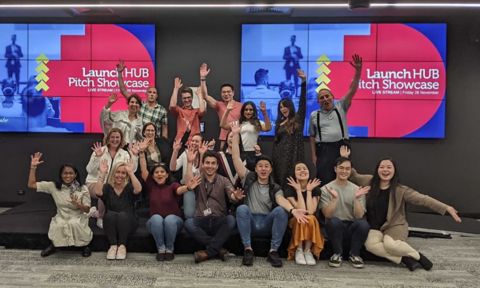Build trust with your employees
There’s an old saying that people join companies but leave managers.
While this saying might make you nervous, what it really tells us is that people will join a company because of its reputation or mission, but once on board, it’s their manager that has the single biggest impact on their day-to-day work environment.
As managers, you need to demonstrate that you care about your people and are worthy of trust in assessing their performance – something you need to work on year-round. This might involve:
- soliciting ideas from your staff before making important decisions;
- meeting regularly as a team, so that your staff can talk about their progress and troubleshoot any problems they’re experiencing as a group;
- making time to get to know each other personally by facilitating situations where yourself and your staff can share personal stories and bond.
Set goals and expectations collaboratively
When employees are actively involved in setting their objectives, they’ll be more likely to see them as fair, and invest in meeting them.
At the beginning of every year, meet with your staff to share your team goals and expectations with them. In addition, set up meetings with them individually to collaboratively establish their personalised performance goals. This not only ensures that everyone is clear on expectations for the year, but also gives you both a yardstick to refer back to each time you discuss performance throughout the year. And remember to use the SMART (Specific, Measurable, Achievable, Relevant, Time-bound) framework when setting goals!
Provide regular feedback between reviews
Although performance reviews usually only take place once or twice a year, don’t limit feedback to these periods. That way, there won’t be any surprises when they occur. This is especially important if there are significant issues with an employee’s performance. A formal review should never be the first time that someone hears they’re not performing as you’d like them to.
Understand why someone’s performance may be lacking
When they’re most effective, performance reviews require managers to understand the underlying causes of a person’s performance issues. For instance, are issues with their performance the result of deficiencies in motivation, or in ability? Someone may be hardworking but lack certain capabilities. In that case, could training and coaching develop those capabilities?
Conversely, a different employee may have the requisite ability, but lack motivation. Could a new incentive or process increase their enthusiasm for the job? Others may seem to lack both motivation and ability. In that case, it may be time to reassess whether this is the right job for that person. Could a different role within the team or organisation better utilise their skills?
Be specific with your feedback
The more specific and descriptive you can make your feedback during performance reviews, the more likely your employee will understand your point of view. Overly general feedback increases feelings of defensiveness rather than openness to behaviour change, because it involves broad judgments and encourages counterarguments rather than discussion. When discussing an issue, provide specific examples that are illustrative of the problem, and always indicate the impact this had on organisational performance.
For instance, saying, “I didn’t think your presentation was up to scratch,” is too subjective, and isn’t substantiated. Saying, “Your presentation didn’t include important information that clients need to know about, such as total costs and a competitor analysis,” is far clearer. From a critique like this, both manager and employee understand exactly what can be improved, and what steps need to be taken to make those improvements.
Focus on the good as well as the bad
Although high achieving and dependable employees may not need as much guidance as others, they’re likely to lose motivation if they’re not acknowledged.
Though it’s easy to focus more of your attention on employees who need a bit of extra help, remember to regularly express appreciation for those who contribute positively to your company’s growth, creativity, and culture. An unexpected email telling them that their last project was outstanding and to “keep up the fantastic work”, or a quick call to say thanks, sends a consistent message to your employee that their work isn't going unnoticed, and that you truly value their contributions.






